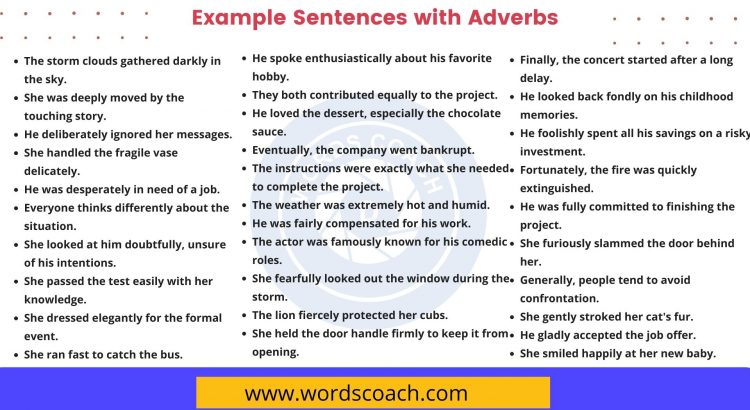An adverb is a part of speech that modifies or describes verbs, adjectives, and other adverbs. It adds more information to a sentence, telling how, when, where, how often, and to what extent something happens.
Category: English Grammar
English Grammar: Learn English grammar in a quick and effective manner by following the tips given in this article. English Grammar is the way we arrange words to make proper sentences. Word-level grammar covers verbs and tenses, nouns, adverbs etc.
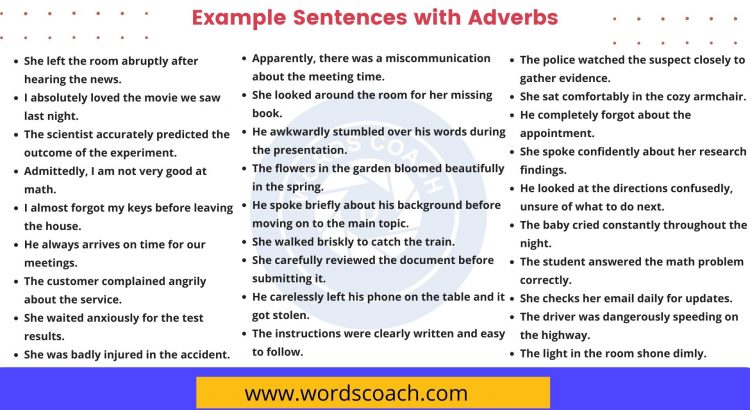
100+ Examples of Adverbs, Example Sentences with Adverbs
An adverb is a part of speech that modifies or describes verbs, adjectives, and other adverbs. It adds more information to a sentence, telling how, when, where, how often, and to what extent something happens. Adverbs can make a sentence more interesting and descriptive, and can help to clarify the meaning of the sentence.
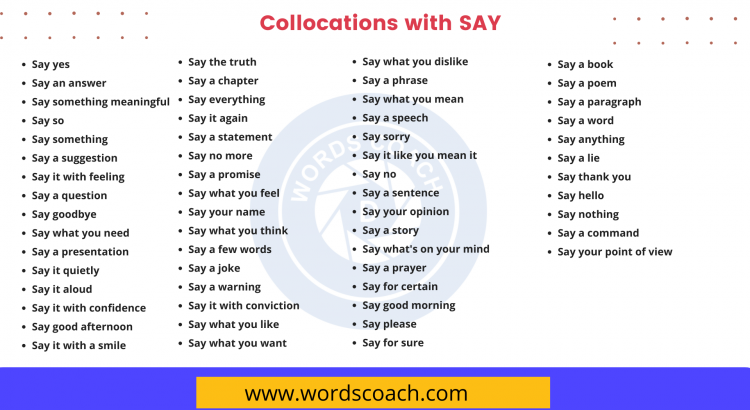
50+ Collocations with SAY
50+ Collocations with SAY
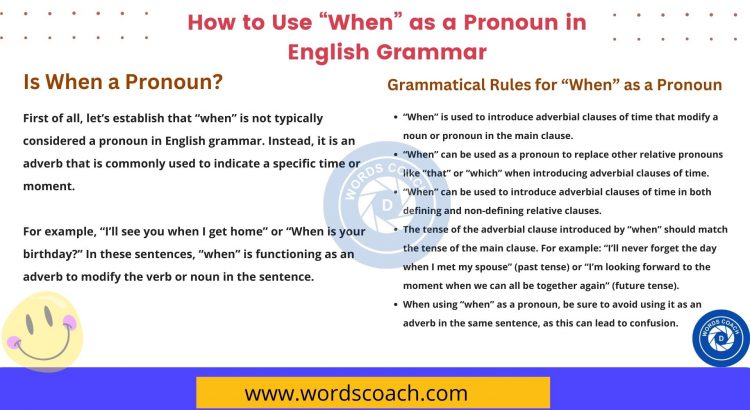
Is When a Pronoun? How to Use “When” as a Pronoun in English Grammar
Is When a Pronoun? How to Use “When” as a Pronoun in English Grammar
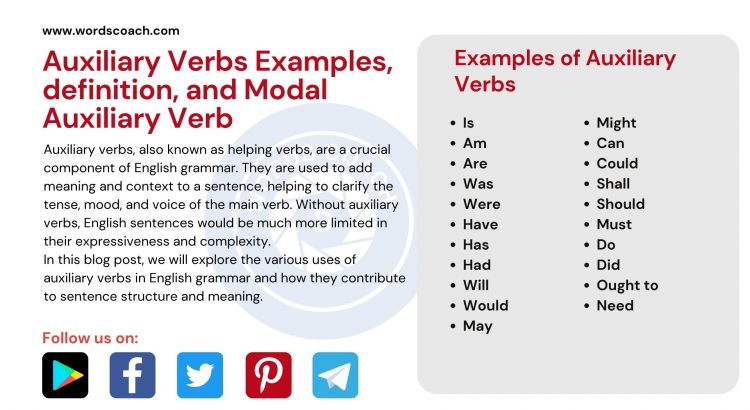
Auxiliary Verbs Examples, definition, and Modal Auxiliary Verb
Auxiliary Verbs Examples, definition, and Modal Auxiliary Verb
Auxiliary verbs, also known as helping verbs, are a crucial component of English grammar. They are used to add meaning and context to a sentence, helping to clarify the tense, mood, and voice of the main verb. Without auxiliary verbs, English sentences would be much more limited in their expressiveness and complexity.
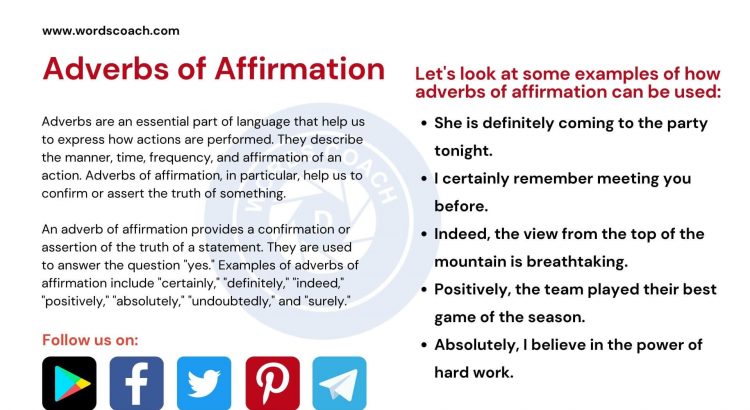
Adverbs of Affirmation
Adverbs are an essential part of language that help us to express how actions are performed. They describe the manner, time, frequency, and affirmation of an action. Adverbs of affirmation, in particular, help us to confirm or assert the truth of something.
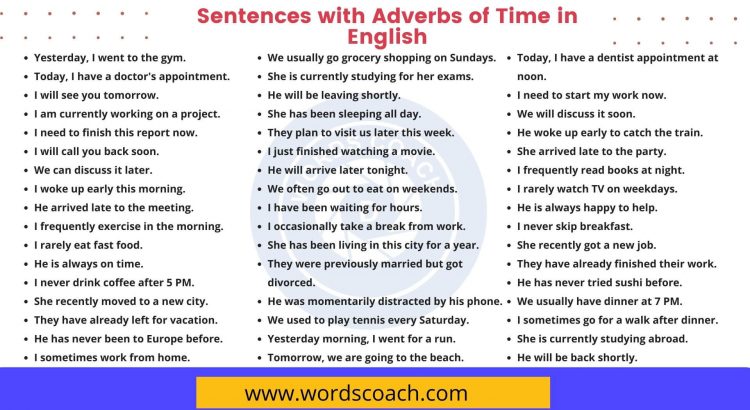
100+ Sentences with Adverbs of Time in English
Here are 110 example sentences with Adverbs of Time in English:
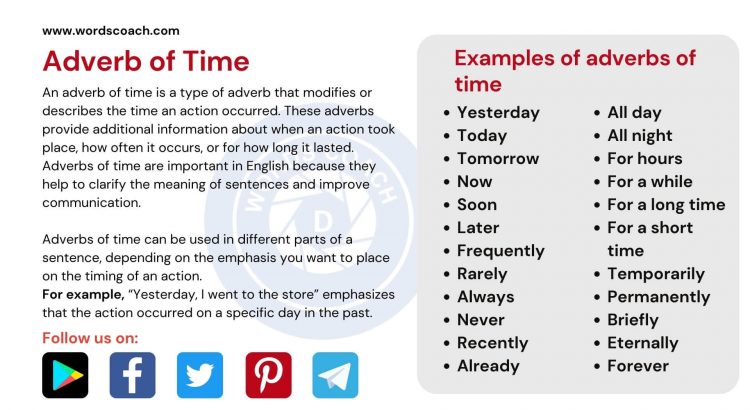
Adverb of Time, 20 Examples of Adverbs of Time
An adverb of time is a type of adverb that modifies or describes the time an action occurred. These adverbs provide additional information about when an action took place, how often it occurs, or for how long it lasted. Adverbs of time are important in English because they help to clarify the meaning of sentences and improve communication.
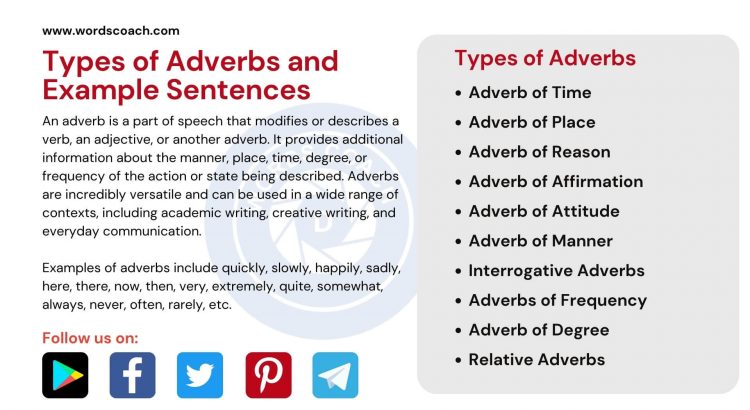
10 Types of Adverbs and Example Sentences
Types of Adverbs and Example Sentences
An adverb is a part of speech that modifies or describes a verb, an adjective, or another adverb. It provides additional information about the manner, place, time, degree, or frequency of the action or state being described. Adverbs are incredibly versatile and can be used in a wide range of contexts, including academic writing, creative writing, and everyday communication.
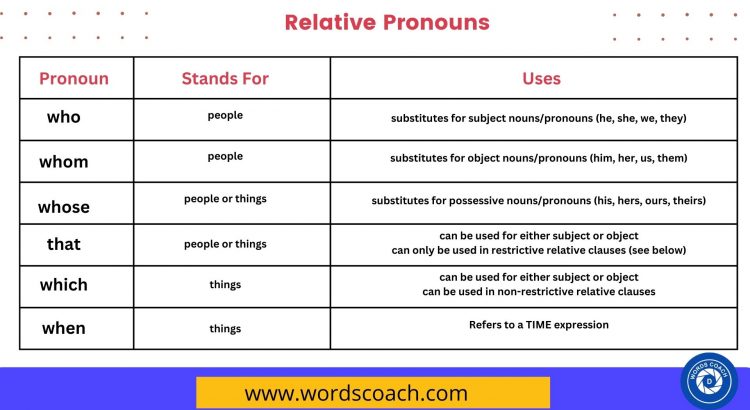
Relative Clause Examples with Answers
Relative Clause Examples with Answers
A relative clause is a type of dependent clause that typically modifies a noun or a pronoun. It provides additional information about the noun or pronoun, and it begins with a relative pronoun (such as who, whom, whose, that, or which) or a relative adverb (such as where, when, or why).
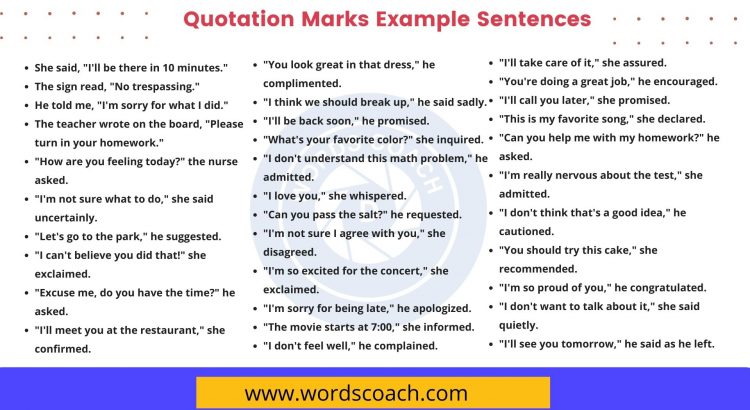
250+ Quotation Marks Example Sentences
Here are 250+ example sentences that use quotation marks:
Quotation Marks Example Sentences
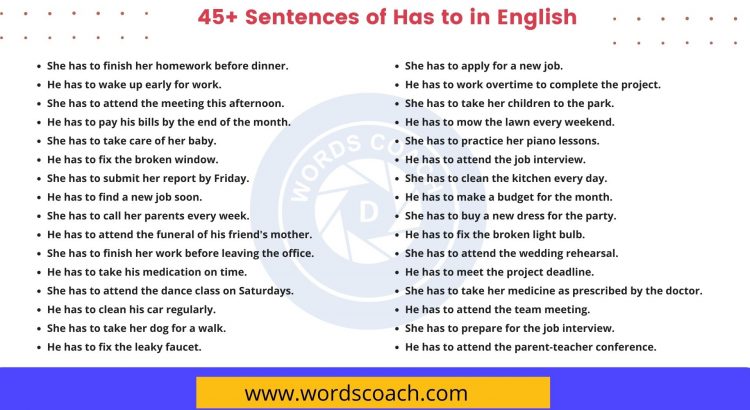
60+ Sentences of Has to in English
Sentences of Has to in English
If you are learning English or trying to improve your fluency, it’s important to understand the various ways in which the verb “have” can be used. One common form is the phrase “has to,” which is used to indicate that someone or something is required to do something.
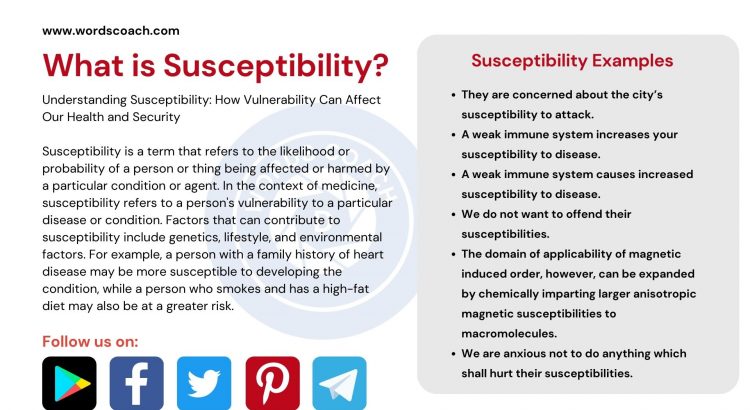
Susceptibility
Understanding Susceptibility: How Vulnerability Can Affect Our Health and Security
Susceptibility is a term that refers to the likelihood or probability of a person or thing being affected or harmed by a particular condition or agent. In the context of medicine, susceptibility refers to a person’s vulnerability to a particular disease or condition. Factors that can contribute to susceptibility include genetics, lifestyle, and environmental factors. For example, a person with a family history of heart disease may be more susceptible to developing the condition, while a person who smokes and has a high-fat diet may also be at a greater risk.
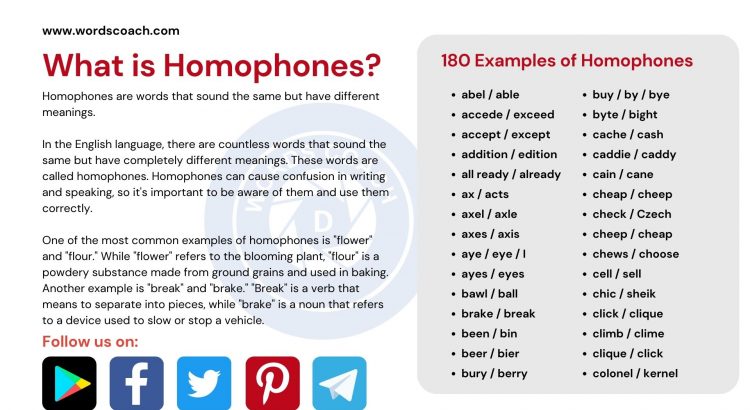
What are Homophones? – 180 Examples of Homophones
Homophones are words that sound the same but have different meanings.
In the English language, there are countless words that sound the same but have completely different meanings. These words are called homophones. Homophones can cause confusion in writing and speaking, so it’s important to be aware of them and use them correctly.
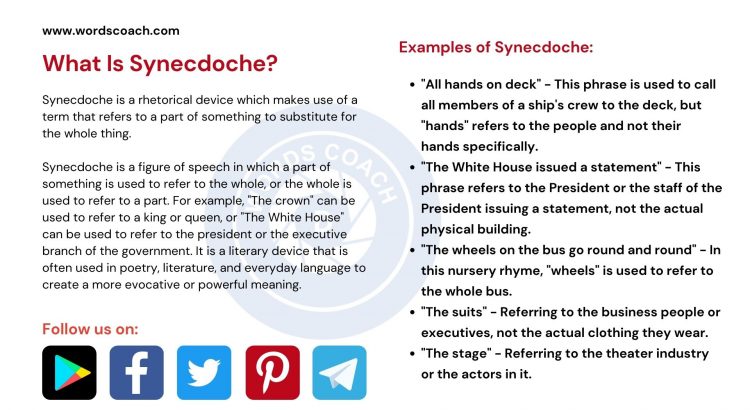
What Is Synecdoche? – Meaning and Definition
Synecdoche is a rhetorical device which makes use of a term that refers to a part of something to substitute for the whole thing.
What Is Synecdoche? – Meaning and Definition
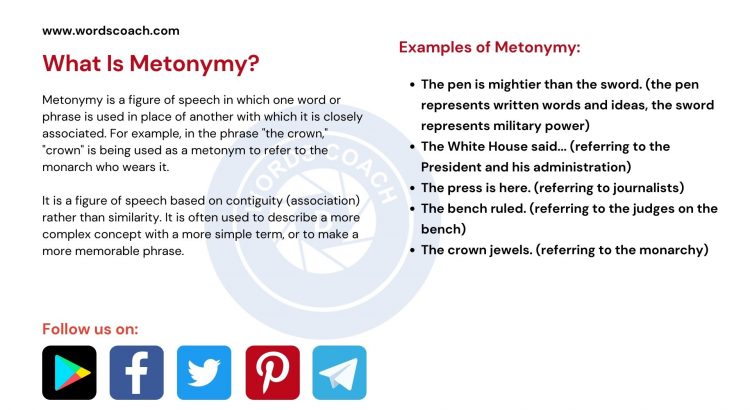
Metonymy – Definition, Meaning, and How to Use with Examples
Metonymy is a figure of speech in which one word or phrase is used in place of another with which it is closely associated. For example, in the phrase “the crown,” “crown” is being used as a metonym to refer to the monarch who wears it.
Metonymy – Definition, Meaning, and How to Use with Examples

Pun – Definition, How to Use, and Examples
A pun is a form of wordplay that exploits multiple meanings of a term, or of similar-sounding words, for an intended humorous or rhetorical effect. These plays on words often rely on verbal humor and can be used to create puns in written or spoken language. These plays on words can take the form of homophonic, homographic, metonymic, or other types of puns.
Pun – Definition, How to Use, and Examples
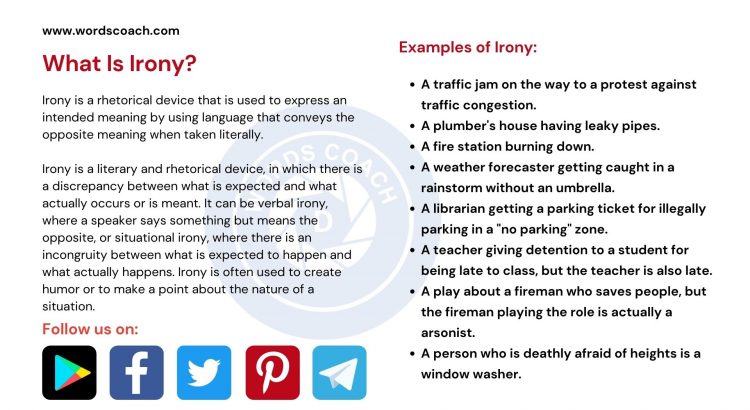
What Is Irony? – Meaning and Definition
Irony is a rhetorical device that is used to express an intended meaning by using language that conveys the opposite meaning when taken literally.
What Is Irony? – Meaning and Definition
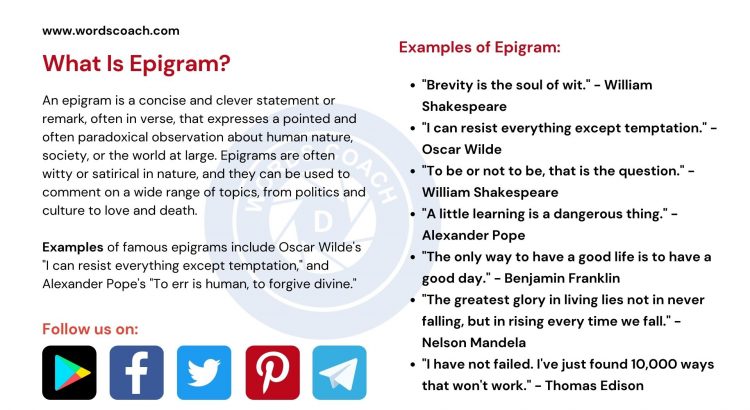
Epigram – Explore Meaning, Definition, and Examples
An epigram is a concise and clever statement or remark, often in verse, that expresses a pointed and often paradoxical observation about human nature, society, or the world at large. Epigrams are often witty or satirical in nature, and they can be used to comment on a wide range of topics, from politics and culture to love and death.
Epigram – Explore Meaning, Definition, and Examples
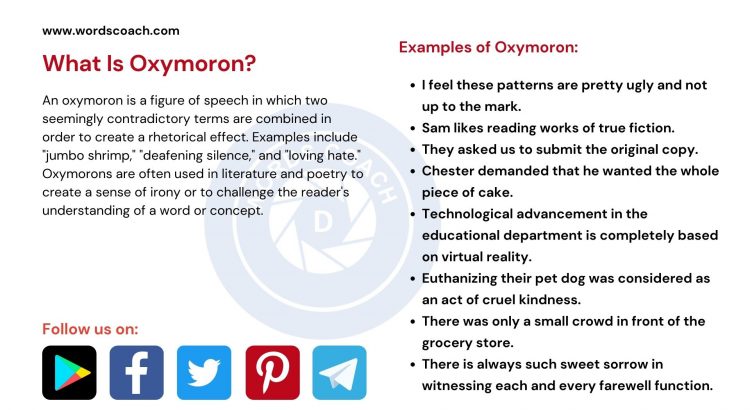
What Is Oxymoron? – Meaning and Definition
An oxymoron is a figure of speech in which two seemingly contradictory terms are combined in order to create a rhetorical effect. Examples include “jumbo shrimp,” “deafening silence,” and “loving hate.”
What Is Oxymoron? – Meaning and Definition
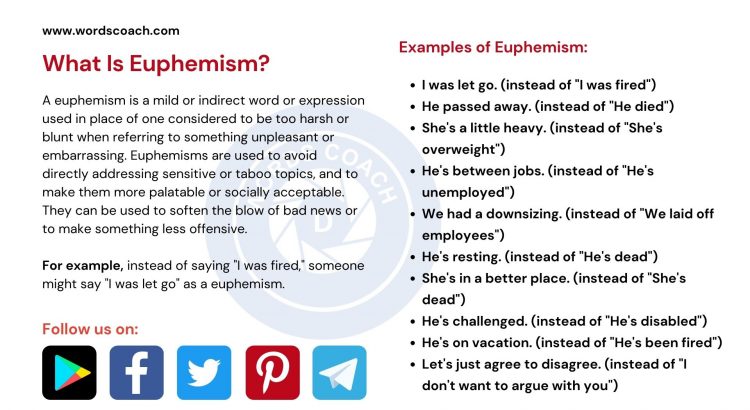
What Is Euphemism? – Meaning and Definition
A euphemism is a mild or indirect word or expression used in place of one considered to be too harsh or blunt when referring to something unpleasant or embarrassing. Euphemisms are used to avoid directly addressing sensitive or taboo topics, and to make them more palatable or socially acceptable. They can be used to soften the blow of bad news or to make something less offensive.
What Is Euphemism? – Meaning and Definition
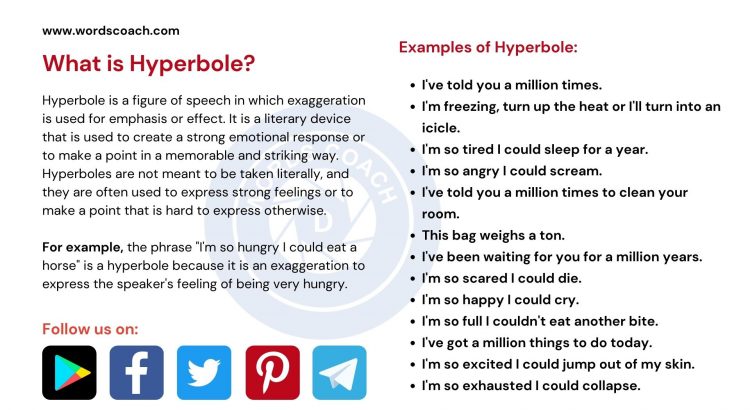
What Is Hyperbole? – Meaning and Definition
Hyperbole is a figure of speech in which exaggeration is used for emphasis or effect. It is a literary device that is used to create a strong emotional response or to make a point in a memorable and striking way. Hyperboles are not meant to be taken literally, and they are often used to express strong feelings or to make a point that is hard to express otherwise.
What Is Hyperbole? – Meaning and Definition
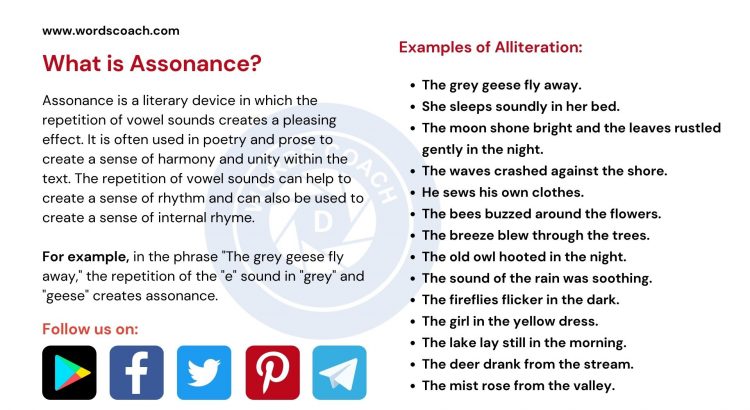
Assonance – Meaning, Definition, Usage and Examples
Assonance is a literary device in which the repetition of vowel sounds creates a pleasing effect. It is often used in poetry and prose to create a sense of harmony and unity within the text. The repetition of vowel sounds can help to create a sense of rhythm and can also be used to create a sense of internal rhyme.
Assonance – Meaning, Definition, Usage and Examples
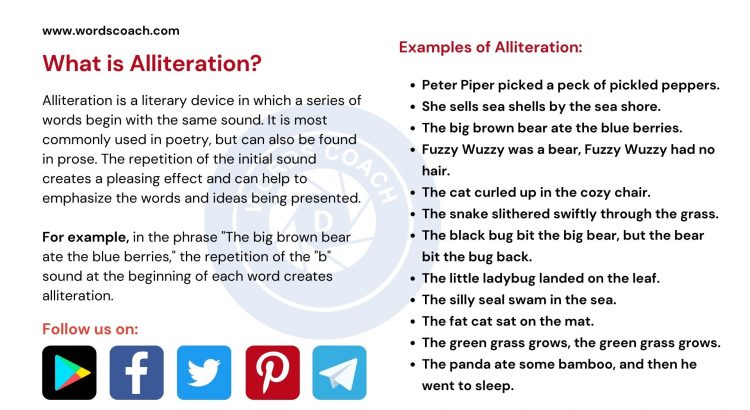
Alliteration: Definition, Usage & Examples
Alliteration is a literary device in which a series of words begin with the same sound. It is most commonly used in poetry, but can also be found in prose. The repetition of the initial sound creates a pleasing effect and can help to emphasize the words and ideas being presented.
Here are 20 examples of alliteration:
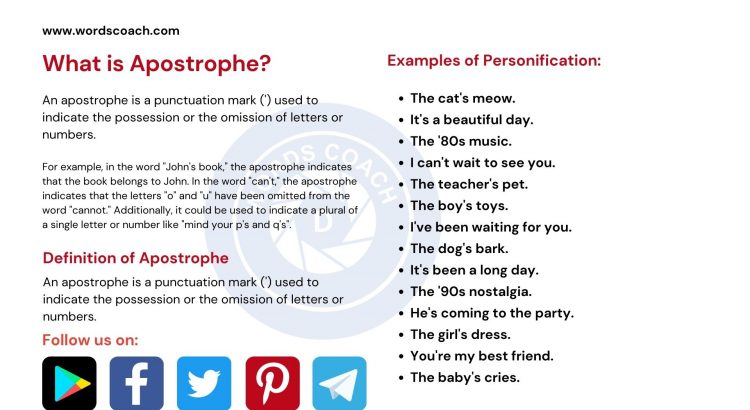
What is Apostrophe?
An apostrophe is a punctuation mark (‘) used to indicate the possession or the omission of letters or numbers.
Definition of Apostrophe
